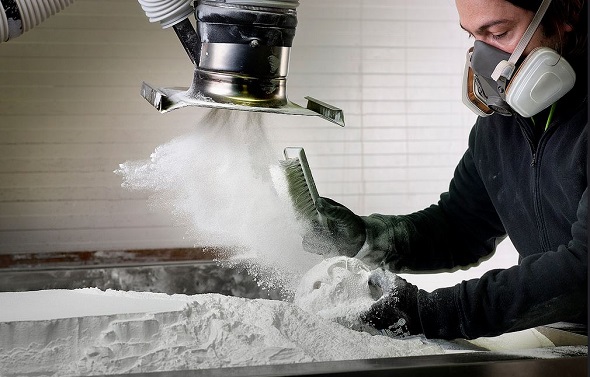In a special issue of Yale University’s Journal of Industrial Ecology, researchers present further analysis on the environmental performance of 3D printing.
According to Tim Gutowski, Professor of Mechanical Engineering at the Massachusetts Institute of Technology (MIT), “there is limited quantitative analysis of the environmental performance of 3D printing. Much of it focuses only on energy used during production, rather than including impacts from raw materials production, use of the product itself, or waste management.”
Seeking to fill this gap, the researchers from MIT, Yale and the University of Nottingham advise that “excitement around the possibilities for dramatic environmental improvements” should be moderated with knowledge of the developing state of additive manufacturing.
Going green with 3D printing
In the Special Issue on Environmental Dimensions of Additive Manufacturing and 3D Printing journal, Professor Gutowski gathered two key attributes within 3D printing which has led to its reputation of being a green technology. This includes waste reduction, as additive manufacturing utilizes recycled materials at desired capacities, leaving less material excess when compared to subtractive manufacturing.
The second key aspect stated by Professor Gutowski involves the accessibility of 3D printing technologies. This has allowed individual makers to manufacture products onsite, diminishing the need to transport products to end users. This prosumer advantage was previously recognized as a core contributor to the eco-friendly benefits of additive manufacturing by a recent study from German environmental association, Umweltbundesamt (UBA).
Wasteful additive manufacturing
Nevertheless, Professor Gutowski states that 3D printing is not inherently zero waste as some technologies require support structures during production. “These supports cannot always be reprocessed back into raw materials [and] it also is important to consider whether the plastics, metals or mixed materials used in parts made with additive manufacturing can be recycled.”
Furthermore, articles within the journal suggest that on-demand 3D printing and rapid prototyping has the potential to lead to “dramatic increases in throw-away consumer products.” From 3D printed cartoon characters to 3D printed phones cases, there is always room for customization of a 3D model which means its predecessor is discarded or left to gather dust – increasing material (plastic) consumption. However, innovative materials such as biodegradable PLA derived from hemp fibers are combating this consumption.

3D printable materials and the environment
Airborne matter, that is, volatile organic compounds (VOCs) present primarily in industrial 3D printing processes has also been a concern throughout this journal as well as UBA’s study, who refer to it as “harmful bi-products.” On the other hand, findings from a two-year investigative report from UL, a global safety science organization, concluded that exposure to particles and VOC emissions produced by 3D printing processes are generally low when applying appropriate precautions.
Furthermore, Professor Gutowski noted while reviewing this research that “scientists also are starting to investigate exposure to emissions of tiny plastic particles and safety hazards during use of additive manufacturing machinery.”

A complementary environmental production method
Reflecting on the research, Professor Gutowski reiterates the innovative and lightweighting capabilities of 3D printing, while addressing its indirect detriments to the environment. This is due to the additional traditional manufacturing processes (such as CNC machining) required when producing functional 3D printed products.
“Additive manufacturing is a complement to conventional manufacturing processes, not a substitute for them.”
“While some 3D printing applications may not be environmentally desirable, there are many opportunities for improvement that have not yet been pursued. The first step is more research on the environmental impacts of producing materials used in 3D printing, how 3D products are used, and the wastes they generate.”
This journal follows a previous special edition of the “Journal of Industrial Ecology,” a peer-reviewed scientific journal produced by the Center for Industrial Ecology (CIE) at the Yale School of Forestry & Environmental Studies (F&ES), which looked at the product life cycles, process energy consumption, sustainability benefits and health and safety considerations in additive manufacturing.
The Special Issue on Environmental Dimensions of Additive Manufacturing and 3D Printing journal was edited by Reid Lifset (YALE), Martin Baumers (University of Nottingham), William Flanagan (AspireSustainability), Tim Gutowski (MIT), and Joost Duflou and Karel Kellens (KU Leuven).
For more of the latest research related to 3D printing sign up to the 3D Printing Industry newsletter, Also, follow us on Twitter, and like us on Facebook.
On the lookout for new talent or seeking a career change? Search and post 3D Printing Jobs for opportunities and new talent across engineering, marketing, sales and more.
Featured image shows a depiction of environmentally 3D printing. Image via R2FACT.


